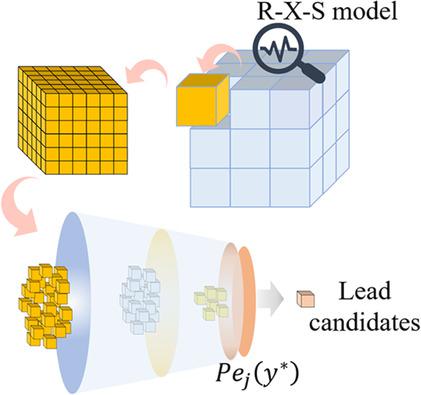当前位置:
X-MOL 学术
›
Adv. Eng. Mater.
›
论文详情
Our official English website, www.x-mol.net, welcomes your feedback! (Note: you will need to create a separate account there.)
A Property-Driven Stepwise Design Strategy for Multiple Low-Melting Alloys via Machine Learning
Advanced Engineering Materials ( IF 3.6 ) Pub Date : 2021-08-24 , DOI: 10.1002/adem.202100612 Huimin Chen 1 , Zhongwen Shang 2 , Wencong Lu 3, 4 , Minjie Li 3 , Fuping Tan 1
Advanced Engineering Materials ( IF 3.6 ) Pub Date : 2021-08-24 , DOI: 10.1002/adem.202100612 Huimin Chen 1 , Zhongwen Shang 2 , Wencong Lu 3, 4 , Minjie Li 3 , Fuping Tan 1
Affiliation

|
Low-melting alloys (LMAs) have an extensive application prospect due to their extremely low melting points for further research of other properties. However, it is difficult to design new multiple alloys with required melting point based on experiments in vast chemical space. Herein, a property-driven stepwise design strategy for multiple alloys design based on complete machine learning process is developed. The R-X-S integrated model based on Ridge Regression (RR), eXtreme Gradient Boosting (XGBoost), and Support Vector Regression (SVR) performs well in melting point prediction with the root mean squared error (RMSE) and correlation coefficient (R) on the validation set of 4.578 and 0.988, respectively. After model construction, the stepwise strategy is used to design potential LMAs with smaller estimation error according to the prediction error function combining variance and bias. The candidates with melting point of 90 °C provide the possibility for solder applications with melting points below 100 °C, and the low-cost candidates with melting point of 16 °C may be used to replace the expensive 75Ga–25In alloy. The stepwise strategy with different step length can improve the search efficiency and map the relationship between LMAs compositions and melting points, which may also be applied to explore other functional materials with high performance.
中文翻译:

通过机器学习对多种低熔点合金进行属性驱动的逐步设计策略
低熔点合金(LMA)因其极低的熔点而具有广泛的应用前景,可用于进一步研究其他性能。然而,基于广阔的化学空间中的实验,很难设计出具有所需熔点的新型多元合金。在此,开发了一种基于完整机器学习过程的多合金设计的属性驱动逐步设计策略。基于岭回归 (RR)、极限梯度提升 (XGBoost) 和支持向量回归 (SVR) 的 RXS 集成模型在具有均方根误差 (RMSE) 和相关系数 ( R) 分别在 4.578 和 0.988 的验证集上。模型构建完成后,根据方差和偏差相结合的预测误差函数,采用逐步策略设计估计误差较小的潜在LMA。熔点为 90 °C 的候选材料为熔点低于 100 °C 的焊料应用提供了可能,而熔点为 16 °C 的低成本候选材料可用于替代昂贵的 75Ga-25In 合金。不同步长的逐步策略可以提高搜索效率并绘制LMAs组成与熔点之间的关系,这也可以应用于探索其他高性能功能材料。
更新日期:2021-08-24
中文翻译:

通过机器学习对多种低熔点合金进行属性驱动的逐步设计策略
低熔点合金(LMA)因其极低的熔点而具有广泛的应用前景,可用于进一步研究其他性能。然而,基于广阔的化学空间中的实验,很难设计出具有所需熔点的新型多元合金。在此,开发了一种基于完整机器学习过程的多合金设计的属性驱动逐步设计策略。基于岭回归 (RR)、极限梯度提升 (XGBoost) 和支持向量回归 (SVR) 的 RXS 集成模型在具有均方根误差 (RMSE) 和相关系数 ( R) 分别在 4.578 和 0.988 的验证集上。模型构建完成后,根据方差和偏差相结合的预测误差函数,采用逐步策略设计估计误差较小的潜在LMA。熔点为 90 °C 的候选材料为熔点低于 100 °C 的焊料应用提供了可能,而熔点为 16 °C 的低成本候选材料可用于替代昂贵的 75Ga-25In 合金。不同步长的逐步策略可以提高搜索效率并绘制LMAs组成与熔点之间的关系,这也可以应用于探索其他高性能功能材料。

























 京公网安备 11010802027423号
京公网安备 11010802027423号